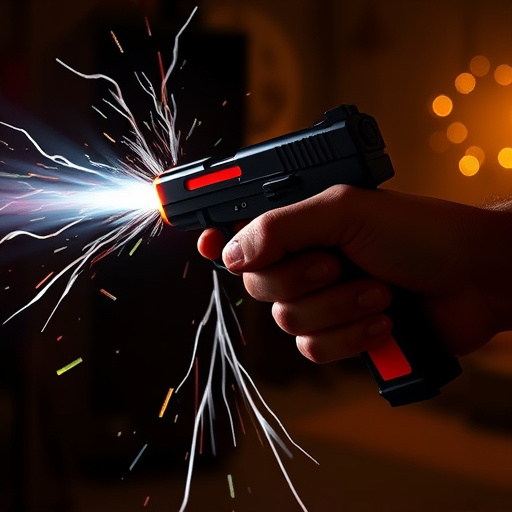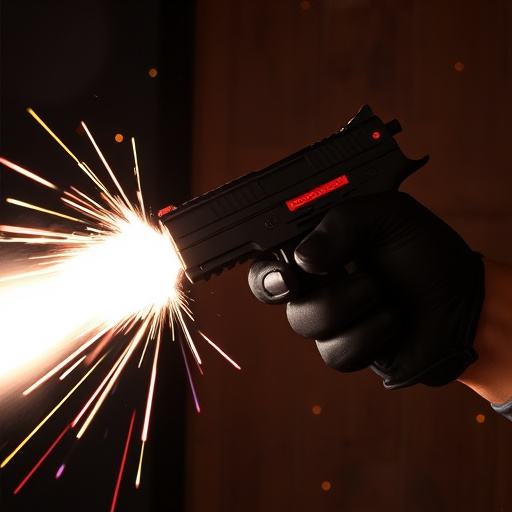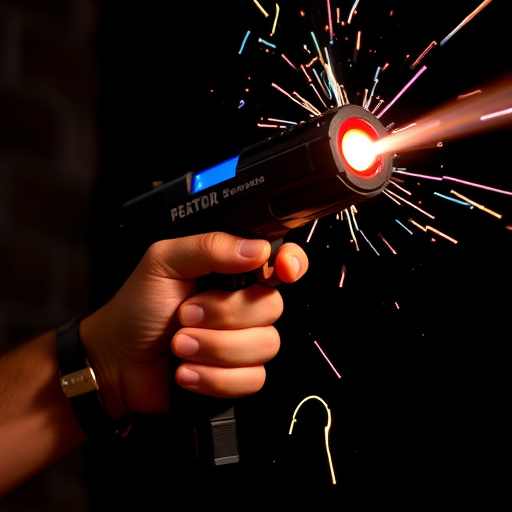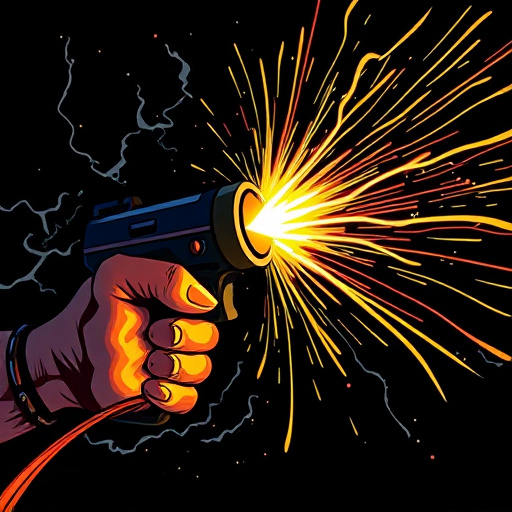Electrical discharge weapons, or stun guns, offer non-lethal self-defense by delivering powerful electric shocks that temporarily disable assailants. While marketed as instant defenses, their effectiveness in knocking out targets is inconsistent. Stun guns disrupt muscle control through high-voltage, low-current discharges, but the outcome varies based on power, user accuracy, and target's condition. Legal compliance and responsible use are crucial; overreliance can foster a false sense of security. Remember, stun guns typically disrupt muscle control, not cause unconsciousness.
Personal defense weapons, particularly stun guns, have gained popularity as non-lethal options for self-protection. This article explores the effectiveness of stun guns in incapacitating individuals, delving into their mechanisms and addressing key considerations. We’ll examine legal aspects, accessibility, safety precautions, and training to ensure responsible use. Understanding how stun guns work—and what they can and cannot achieve—is crucial for making informed decisions about personal safety without knocking someone out indiscriminately.
- Understanding Electrical Discharge Weapons: A Stun Gun Overview
- How Effective Are Stun Guns in Rendering a Person Inconsequential?
- The Mechanisms Behind Stun Gun Operations
- Legal Considerations and Accessibility of Stun Guns
- Safety Precautions and Training for Responsible Use
Understanding Electrical Discharge Weapons: A Stun Gun Overview

Electrical discharge weapons, commonly known as stun guns, are non-lethal self-defense tools designed to temporarily incapacitate a target through an electric current. Unlike traditional firearms, they do not fire projectiles but rather deliver a powerful electrical shock, making them a popular choice for personal protection. The primary mechanism involves generating a high-voltage, low-current electric discharge, which disrupts the target’s muscular control, causing temporary paralysis and disorientation.
Stun guns are not meant to knock someone out; instead, they aim to disable an assailant long enough for the user to escape or seek help. The intensity of the shock varies across models, but most will cause a target to fall to the ground, providing a crucial moment of safety for the user. It’s important to note that proper usage and training are essential, as improper handling could lead to accidental shocks or even harm to bystanders.
How Effective Are Stun Guns in Rendering a Person Inconsequential?

Stun guns, also known as electroshock weapons, have been marketed as powerful personal defense tools that can incapacitate an attacker instantly. The claim is that a single shock from these devices will render the target momentarily unconscious, providing the user with time to escape or seek help. However, the effectiveness of stun guns in this regard has been a subject of debate and varying opinions.
While stun guns do deliver a powerful electric discharge that can disrupt muscle control and cause temporary paralysis, their ability to consistently knock out a person is questionable. Factors such as the device’s power output, the target’s physical condition, and the accuracy of the user’s deployment can significantly impact the outcome. In some cases, subjects have reported being able to continue fighting or even run away after being stunned, suggesting that the effect may not always be as severe as advertised. Therefore, relying solely on a stun gun for self-defense might not guarantee success in rendering an attacker completely inconsequential.
The Mechanisms Behind Stun Gun Operations

Stun guns, also known as electronic control devices (ECDs), operate on the principle of delivering a powerful electric shock to disable an attacker temporarily. Unlike conventional firearms that use gunpowder and bullets, stun guns utilize electrical energy to disrupt muscle control in the body. When activated, the device emits a controlled electrical discharge, usually through two metal probes or contacts, which can be pressed against an assailant’s skin. This discharge interferes with the nervous system’s signaling, causing muscles to contract involuntarily and leading to a loss of balance and strength.
The effect of a stun gun is not typically one of knocking someone out as with traditional knockout drugs. Instead, it induces a state of temporary disorientation, muscle spasms, and intense pain, allowing the user time to escape or subdue their attacker. The intensity of the shock can vary, with higher voltage levels delivering more powerful jolts. However, even low-voltage stun guns can be effective in disarming an assailant and creating a critical gap for personal safety.
Legal Considerations and Accessibility of Stun Guns

When considering personal defense weapons, one of the most popular choices is the stun gun. However, it’s crucial to understand the legal considerations surrounding their use. The legality of stun guns varies greatly depending on location; some regions allow them for self-defense with specific restrictions, while others may have strict regulations or outright ban them. Before purchasing a stun gun, individuals should research and comply with local laws to avoid legal repercussions.
Accessibility is another factor. Stun guns are generally easier to obtain than conventional firearms, often requiring less stringent background checks. This accessibility has contributed to their popularity as personal defense tools. Yet, it’s essential for users to understand that a stun gun is not guaranteed to knock you out; its effectiveness depends on factors like the device’s voltage, the user’s physical condition, and the target’s sensitivity. Misuse or overreliance on such devices can also lead to false senses of security, potentially putting individuals at risk in dangerous situations.
Safety Precautions and Training for Responsible Use

When considering a personal defense weapon like a stun gun, it’s crucial to prioritize safety and responsible use. Stun guns, while designed to incapacitate an assailant with an electric discharge, do not typically cause unconsciousness. They work by delivering a powerful jolt of electricity that disrupts muscle control, allowing the user to escape or defend themselves. However, it’s important to remember that the effectiveness can vary based on factors like the device’s power output and the attacker’s physical build.
Proper training is essential. Users should learn how to safely operate the stun gun, including understanding its range and activation mechanism. It’s also vital to familiarize yourself with local laws regarding stun guns, as regulations differ widely. Responsible use includes keeping the device out of reach of children and storing it securely to prevent accidental discharge. Regular practice sessions can ensure confidence in handling the weapon should the need arise, enhancing overall safety and preparedness.
In conclusion, while stun guns offer an option for personal defense, it’s crucial to understand their effectiveness in rendering a person inconsequential is not guaranteed. They can cause temporary disability through electrical discharge, but the outcome varies based on factors like the device’s power and application. Legal accessibility differs by region, so it’s essential to research local regulations before considering one as a self-defense tool. Always prioritize safety by obtaining proper training and adhering to responsible use guidelines to ensure their effective and legal deployment.
